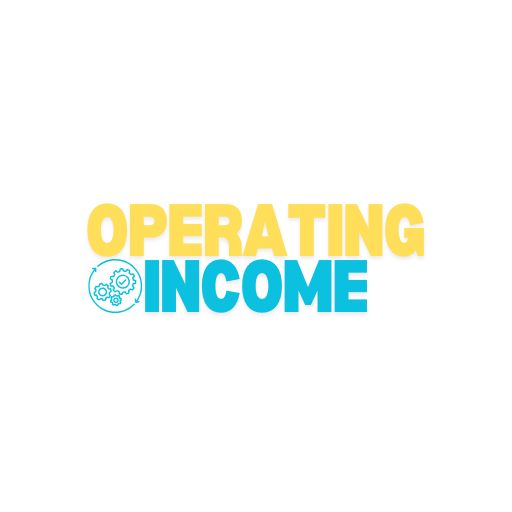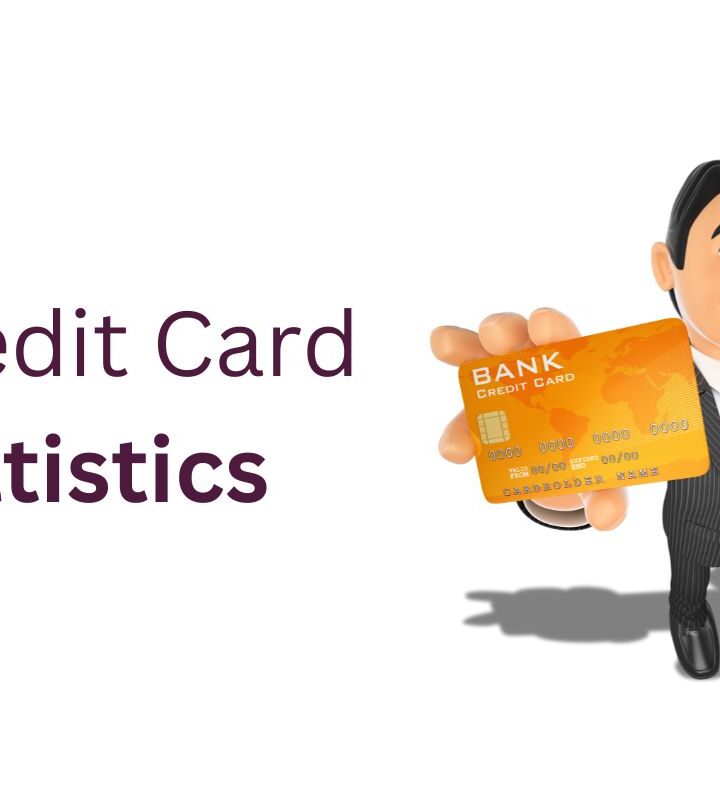Introduction
Credit Card Statistics: Credit cards have played an important role in people’s lives as they allow them to manage their money in recent years. They are used for everyday shopping, big purchases, and even emergencies. Statistics about credit card usage help us understand how people spend, save, and borrow money. All current trends and analyses represent the total number of people who own credit cards, how much debt they carry, and how often they pay it back. All data helps businesses, banks, and policymakers make better decisions.
For individuals, understanding these statistics can lead to smarter money habits and financial planning. This article includes several statistical analyses from different insights by offering insights into spending behavior and the importance of responsible credit card use.
Editor’s Choice
- In the third quarter of 2024, U.S. credit card debt reached a record USD 1.17 trillion, an 8.1% increase from the previous year.
- Lenders wrote off over USD 46 billion in delinquent credit card loans in the first nine months of 2024, marking a 50% increase from the same period in 2023 and the highest level since 2010.
- At the end of 2023, the average credit card debt per borrower was USD 6,360, about 10% higher than the previous year, reaching an all-time high.
- Credit Card Statistics show that the average interest rate on credit cards is very high, currently at 28.15%.
- On average, people owe USD 6,365 in credit card debt.
- Credit card users typically use about 22.16% of their available credit.
- As of 2024, APRs vary based on credit scores. Superprime (740+) has an APR of 16%- 18%, Prime (670-739) has an APR of 20%- 22%, Subprime (580-669) has an APR of 22%- 24%, and Deep Subprime (below 579) has an APR of 24% or higher.
- Credit Card Statistics further states that the Federal Reserve’s rate hike led lenders to issue USD 89 billion in new credit cards.
- In August, Americans owed over USD 1 trillion on credit cards for the first time.
- In the second quarter of 2024, Americans added USD 43 billion to their credit card debt.
- Credit card interest rates are now over 20%, the highest they’ve been in more than 20 years.
You May Also Like To Read
General Credit Card Statistics
- In 2024, people in the U.S. owe a total of $1.142 trillion on credit cards.
- In Q2 2024, credit card debt grew $27 billion, rising 5.8% compared to Q2 2023.
- The average credit card debt for people with unpaid balances in the U.S. rose to USD 7,236 in the third quarter of 2024, up from USD 7,130 in the second quarter.
- As of 2022, 82% of U.S. adults had a credit card, and by mid-2023, there were approximately 167.2 million credit card users.
- As of January 2024, 58.5 million credit cards were in circulation in the UK, with 68% of UK adults (around 36.2 million people) owning at least one credit card.
- The average monthly spend per UK credit card was EUR 348 in January 2024, doubling from EUR 171 in January 2021.
- Approximately 1.25 billion people worldwide have credit cards, representing nearly 16% of the global population.
- In September 2024, there were 383 million credit card transactions in the UK, an 8.6% increase from September 2023, with a total spend of EUR 21.2 billion, 9.5% higher than the previous year.
- By the end of 2023, credit card delinquency rates in the U.S. had risen to 3.1%, the highest since 2011.
- The average interest rate on credit cards in the U.S. increased from 18.43% in Q3 2022 to 22.77% by Q3 2023, driven by consecutive federal funds rate hikes.
Personal Credit Card Debt Statistics
- As per Credit Card Statistics, nearly half of Americans (48%) use credit cards to pay for everyday needs.
- In the last five years, 43% have missed at least one credit card payment.
- On average, 61% carry USD 5,875 in credit card debt, with 23% adding more debt monthly.
- In 2023, 14% missed a payment.
- Americans spend about USD 1,506 monthly on credit cards, but millennials spend even more at USD 2,410.
- Over 53% hit their credit limits, and 29% max out cards each month.
- Alarmingly, 40% have been in credit card debt for over five years.
Credit Card Ownership Statistics
- In 2023, people in the U.S. had 1.17 billion credit cards, and experts believe this number will grow to 1.26 billion by 2026.
- According to Credit Card Statistics, 214.9 million adults in the U.S., or 82% of them, have at least one credit card in their name.
- On average, credit cardholders own three cards and make about 251 purchases with them each year.
- More than 75% of U.S. households have at least one general-use credit card.
Credit Card Usage Statistics
- About 31% of Americans use credit cards to make purchases.
- On average, a credit card purchase in the U.S. costs USD 95.
- Half of U.S. residents have at least two credit cards, and one in five owns five or more.
- Every year, about 10% of Americans say they’ve experienced credit card fraud or theft.
- Credit Card Statistics also mentioned that the typical interest rate for credit cards in the U.S. is 21.47%.
- Credit card users in the U.S. earn over USD 40 billion in rewards each year.
- Americans spend roughly USD 120 billion each year on credit card interest and fees.
Credit Card Account Statistics

(Reference: lendingtree.com)
- In 2024, about 22.4% of these were opened by people with subprime credit scores (below 660).
- Meanwhile, 28.8% of new accounts were opened by individuals with prime credit scores (660 to 719), and those opened by 48.8% with superprime scores (720+).
- Credit Card Statistics also depict that in the last 20 years, the total number of active credit card accounts has grown by 31.4%.
- On average, superprime users have a credit limit of USD 12,046 and spend USD 803 monthly.
- Prime users have a USD 7,392 limit and spend USD 563, while subprime users have a USD 3,190 limit and charge USD240 monthly.
Interest Rate on People’s Credit Cards Statistics
- In the third quarter of 2024, the average APR for all credit cards was 21.76%.
- For cards that charge interest, the average APR during the same time was 23.37%.
- As of today, the average APR for new credit card offers is 24.43%.
Credit Card Statistics By Average Debt

(Source: lendingtree.com)
- According to a report published by Lending Tree of 2024, in the United States of America, the highest average credit card debt was accounted for by Credit cardholders in Connecticut, resulting in Q2 (USD 8,835) and Q3 (USD 9,323).
- Meanwhile, in Q2 and Q3 of 2024, Mississippi holds the lowest position, with an average credit credit card debt of USD 5,265 and USD 4,918, respectively.
The table below shows the U.S.’s top states’ average credit card debt in 2024:
| States | Q2 (USD) | Q3 (USD) |
| District of Columbia | 8,707 | 9,209 |
| California | 8,980 | 9,191 |
| New Jersey | 9,229 | 9,112 |
| Florida | 8,841 | 9,094 |
| Alaska | 8,795 | 9,040 |
| Maryland | 9,076 | 8,830 |
| New York | 8,506 | 8,810 |
| Hawaii | 8,535 | 8,798 |
| Massachusetts | 8,556 | 8,685 |

(Reference: lendingtree.com)
- Based on a study by the Federal Reserve in May 2024, less than half of adults (47%) kept a credit card balance for at least one month last year.
- Meanwhile, 53% of them never carried a credit card balance in 2024.
Average APRs of Credit Cards By Category
| Category | Maximum APR | Minimum APR | Average |
| Secured credit cards | 26.88% | 26.88% |
26.88% |
|
Cash back cards |
27.96% | 21.32% | 24.64% |
| Rewards cards | 28.01% | 20.70% |
24.36% |
|
Airline credit cards |
28.99% | 20.55% | 24.77% |
| Gas rewards cards | 27.95% | 20.91% |
24.43% |
|
Hotel credit cards |
28.77% | 20.44% | 24.61% |
| Grocery rewards cards | 28.14% | 20.38% |
24.26% |
|
Travel rewards cards |
28.57% | 20.34% | 24.45% |
| Dining rewards cards | 28.17% | 20.21% |
24.19% |
|
Student credit cards |
28.32% | 18.66% | 23.49% |
| Low-interest credit cards | 22.38% | 13.54% |
17.96% |
|
No-annual-fee cards |
27.47% | 20.47% | 23.97% |
| 0% balance transfer cards | 27.63% | 18.53% |
23.08% |
Small Businesses Credit Card Debt Statistics
- Credit Card Statistics show that 61% of small business owners use personal credit cards to cover business costs.
- Only 20% have a separate credit card just for business use.
- According to JPMorgan Chase, businesses that don’t pay their credit card bills in full every month carry a typical balance of USD 7,000.
United States of Credit Card Debt Statistics
- Credit Card Statistics state that during the second quarter of 2024, people in the U.S. added USD 43 billion to their credit card debt.

(Source: docuclipper.com)
- In Alaska, people have the highest average credit card debt in the U.S., which is USD 7,338.
- On the other hand, Wisconsin and Iowa have the lowest average debts, with USD 4,808 and USD 4,811, respectively.
By Demographics
- On average, men owe more on their credit cards than women (USD 6,357 vs. USD 6,232).
- Slightly more women have credit cards compared to men (67.8% of women vs. 65.5% of men).
- Credit Card Statistics state that people from the Silent Generation (ages 77 and older) have the best average credit scores at 761.
- Baby Boomers have the most credit cards, with an average of 4.6 per person.
- Nearly everyone earning over USD 100,000 a year (98%) has a credit card.
- Among racial groups, Asian adults are the most likely to have credit cards, with 92% owning one.
- White families carry the highest credit card debt, averaging USD 6,940.
- As of 2024, in the U.S., the average credit card debt accounted for USD 2,854 for those aged 18 to 29 years.
Furthermore, other age groups average credit card debt are detailed in the table below:
| Age (years) | Credit card debt
(USD) |
| 30 to 39 | 6,400 |
| 40 to 49 | 7,600 |
| 50 to 59 | 7,155 |
| 60 to 69 | 6,043 |
| 70 & above | 3,177 |
Credit Card Transactions Statistics in the U.S.
- People in the U.S. are using credit cards more, with nearly 26 billion more payments made recently.
- Credit cards now make up 77% of non-cash payments, totaling 157 billion transactions.
- An average American makes about 23 credit card purchases each month using simple words.
- Millennials make about 30 card payments monthly, while Baby Boomers make only 15 payments monthly.
- People living in big cities like New York and San Francisco use credit cards for 80 out of every 100 purchases.
- In comparison, people in rural areas use credit cards for 60 out of every 100 purchases.
You May Also Like To Read
Credit Card Statistics in India

(Reference: statista.com)
- The number of credit cards used in India is expected to grow steadily from 2024 to 2029, adding around 2.3 million cards, or 5.29%.
- The above Statista graph analyses show that in 2024, the total number of credit cards used in India will be around 43.49 million and will reach up to 44.06 million.
- Furthermore, in coming years, the total number of credit cards used in India will be estimated to be 2026 (44.56 million), 2027 (45.02 million), 2028 (45.43 million) and 2029 (45.81 million).
Number of Credit Card Transactions Statistics in India

(Reference: statista.com)
- Credit Card Statistics show that in the financial year 2024, people in India used credit cards for about 3.57 billion transactions.
- Moreover, in coming years, the total number of credit card transactions in India will be around 2025 (4.44 million), 2026 (5.39 million), 2027 (6.35 million) and 2028 (7.61 million).
- By the financial year 2029, this number is expected to grow to 9.13 billion transactions.
How Many People in Each credit Score Tier had at Least One Credit Card in 2024?
| Credit Tier | Credit Score Range | Number of Card Holders | Number of Non-Card Holders |
| Excellent | 750–850 | 20,000,000 | 500,000 |
| Good | 700–749 | 15,000,000 | 1,000,000 |
| Fair | 650–699 | 10,000,000 | 2,000,000 |
| Poor | 600–649 | 5,000,000 | 3,000,000 |
| Very Poor | Below 600 | 2,000,000 | 5,000,000 |
Credit Card Product Developments and Future Releases
- In May 2024, Visa announced plans to “reinvent the card” by introducing digital-native card experiences aimed at providing consumers with more customized, convenient, and secure payment options.
- In November 2024, Affirm partnered with Visa and launched a card in the U.S. that includes debit transactions with “buy now, pay later” (BNPL) features, catering to the growing demand for flexible payment options.
Factors Influencing Credit Card Demand
- High inflation and increased living costs have led consumers to rely more on credit cards to manage expenses.
- Rising interest rates make credit card borrowing more expensive, potentially affecting consumer spending and debt levels.
- The convenience of credit cards and the appeal of rewards programs continue to drive their usage.
- Innovations such as digital wallets and contactless payments enhance the appeal and accessibility of credit cards.
Conclusion
For years, using a credit card wisely benefited global people by earning rewards and building a good credit score. However, it’s important to avoid overspending and always pay your bill on time to steer clear of extra charges. Stick to your budget and use your card responsibly.
This way, you can enjoy the convenience and advantages it offers while staying out of debt. Remember, a credit card is a tool, not free money, so use it with care
How do credit card limits work?
Credit card limits are the maximum amounts you can spend, set by the bank based on eligibility.
What are the different types of credit cards?
There are several types of credit cards, such as rewards cards, travel cards, cashback cards, balance transfer cards, secured cards, student cards, business cards, and low-interest cards.
What is a credit score, and why does it matter?
A credit score is a number showing how good you are at repaying borrowed money.
APR stands for Annual Percentage Rate. It’s the yearly cost of borrowing money, including interest and fees, shown as a percentage.
What are the benefits of credit cards?
Credit cards allow you to buy now and pay later, build credit scores, earn rewards, enjoy discounts, and provide extra security.

Saisuman Revankar
Saisuman is a talented content writer with a keen interest in mobile tech, new gadgets, law, and science. She writes articles for websites and newsletters, conducting thorough research for medical professionals. Fluent in five languages, her love for reading and languages led her to a writing career.
With a Master’s in Business Administration focusing on Human Resources, Saisuman has worked in HR and with a French international company. In her free time, she enjoys traveling and singing classical songs.
At Coolest Gadgets, Saisuman reviews gadgets and analyzes their statistics, making complex information easy for readers to understand.




